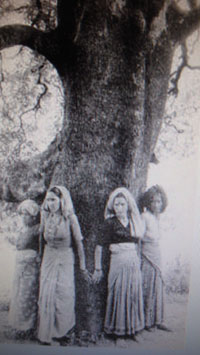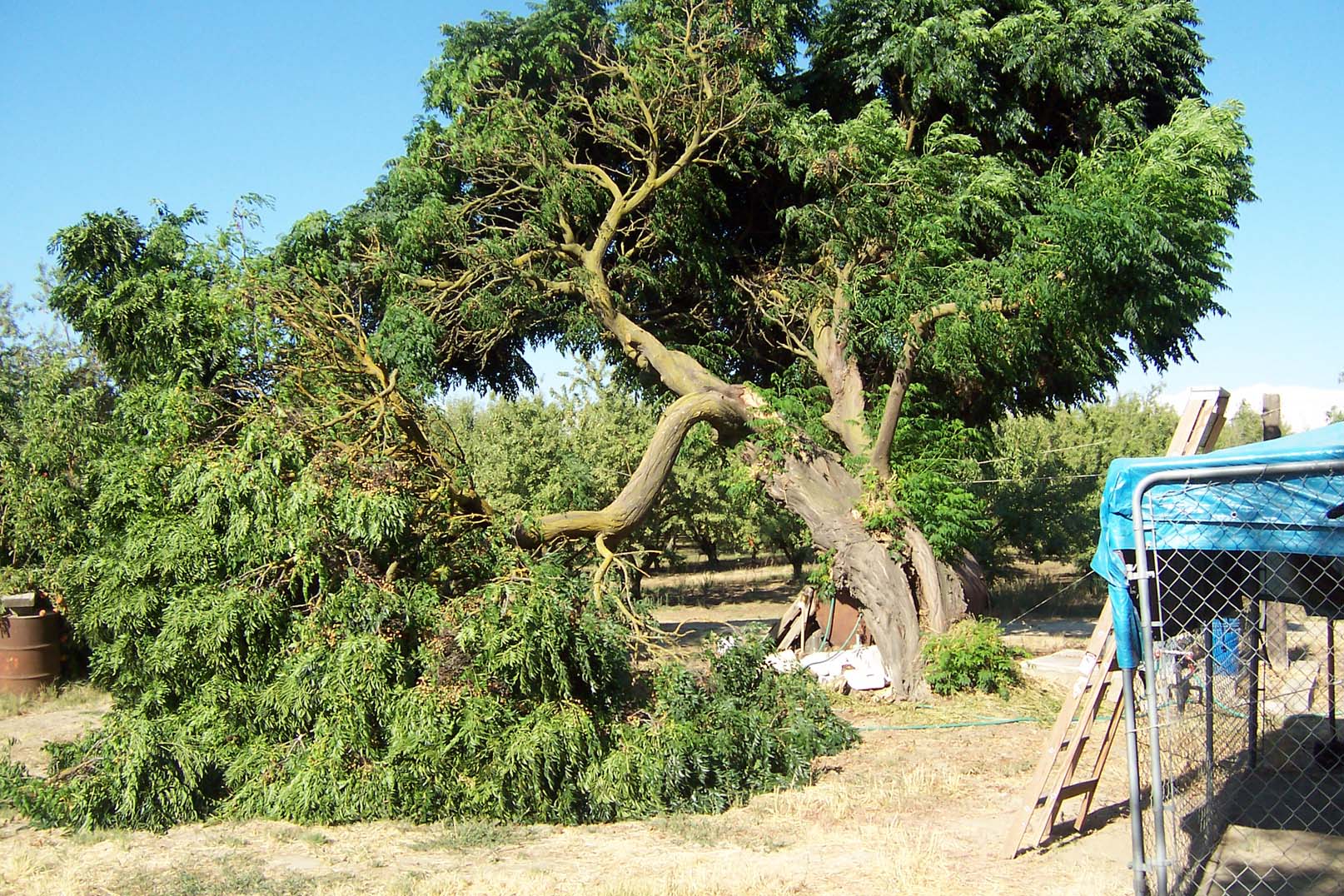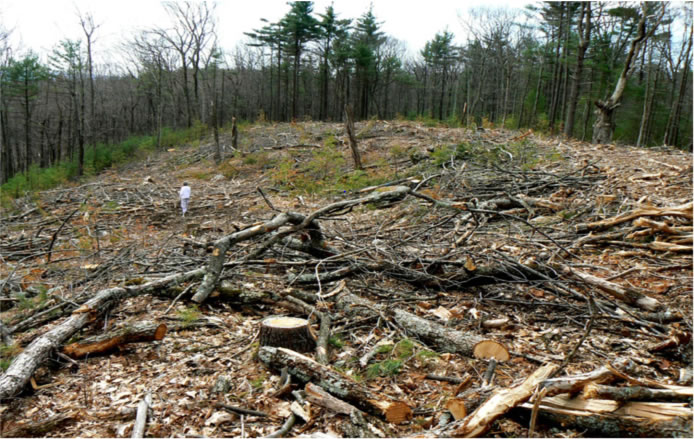History
The Chipko movement,
though primarily a livelihood protection movement rather than a forest
conservation movement, went on to become a rallying point for many future environmentalists,
environmental protests and movements all over the world and created a
precedent for non-violent protest. It
occurred at a time when there was hardly any environmental movement in the
developing world, and its success meant that the world immediately took
notice of this non-violent movement, which was to inspire in time many such
eco-groups by helping to slow down the rapid deforestation,
expose vested interests, increaseecological awareness,
and demonstrate the viability of people power. Above all, it stirred up the
existing civil society in India, which began to address the issues of tribal
and marginalized people. So much so that, a quarter of a century later, India
Todaymentioned the people behind the "forest
satyagraha" of the Chipko
movement as amongst "100 people who shaped India".Today,
beyond the eco-socialism hue,
it is being seen increasingly as an ecofeminism movement.
Although many of its leaders were men, women were not only its backbone, but
also its mainstay, because they were the ones most affected by the rampant
deforestation,, which led to a lack of firewood and fodder as
well as water for drinking and irrigation.
Over the years they also became primary stakeholders in a majority of the
afforestation work that happened under the Chipko movement.
In 1987 the Chipko
Movement was awarded the Right
Livelihood Award
Beginnings
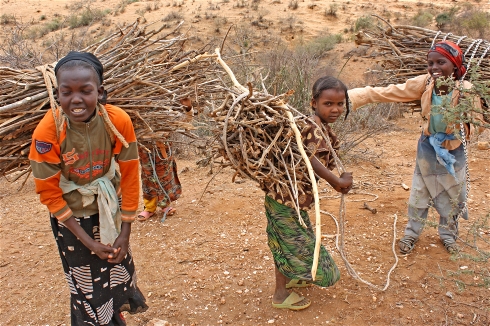
|
“ |
"Maatu hamru, paani hamru, hamra
hi chhan yi baun bhi... Pitron na lagai baun, hamunahi ta bachon bhi"
Soil ours, water ours, ours are these forests. Our forefathers
raised them, it’s we who must protect them.
-- Old Chipko
Song (Garhwalilanguage) |
” |
|
In India the forest
cover started deteriorating at an alarming rate, resulting in hardships for
those involved in labour-intensive fodder and firewood collection. This
also led to a deterioration in the soil conditions, and erosionin
the area. As water sources dried up in the hills, water shortages became
widespread. Subsequently, communities gave up raising livestock, which added
to the problems of malnutrition in the region. This crisis was heightened by
the fact that forest conservation policies, like the Indian
Forest Act, 1927, traditionally restricted the access of local
communities to the forests, resulting in scarce farmlands in an over-
populated and extremely poor area, despite all of its natural wealth. Thus
the sharp decline in the local agrarian economy lead to a migration of
people into the plains in search of jobs, leaving behind several
de-populated villages in the 1960s.
Gradually a rising
awareness of the ecological crisis, which came from an immediate loss of
livelihood caused by it, resulted in the growth of political activism in the
region. The year 1964 saw the establishment of Dasholi
Gram Swarajya Sangh (DGSS)(“Dasholi
Society for Village Self-Rule” ), set up by Gandhian social
worker, Chandi
Prasad Bhatt in Gopeshwar,
and inspired byJayaprakash
Narayan and the Sarvodaya movement,
with an aim to set up small industries using the resources of the forest.
Their first project was a small workshop making farm tools for local use.
Its name was later changed to Dasholi
Gram Swarajya Sangh (DGSS)
from the original Dasholi Gram
Swarajya Mandal (DGSM) in the
1980s. Here they had to face restrictive forest policies, a hangover of colonial
era still prevalent, as well
as the "contractor system", in which these pieces of forest land were
commodified and auctioned to big contractors, usually from the plains, who
brought along their own skilled and semi-skilled laborers, leaving only the
menial jobs like hauling rocks for the hill people, and paying them next to
nothing. On the other hand, the hill regions saw an influx of more people
from the outside, which only added to the already strained ecological
balance.
Hastened by increasing
hardships, the Garhwal
Himalayas soon became the
centre for a rising ecological awareness of how reckless deforestation had
denuded much of the forest cover, resulting in the devastating Alaknanda
River floods of July 1970,
when a major landslide blocked the river and affected an area starting from
Hanumanchatti, near Badrinath to
350 km downstream till Haridwar,
further numerous villages, bridges and roads were washed away. Thereafter,
incidences of landslides and land subsidence became
common in an area which was experiencing a rapid increase in civil
engineering projects.
Organization
Soon villagers,
especially women, started organizing themselves under several smaller
groups, taking up local causes with the authorities, and standing up against
commercial logging operations that threatened their livelihoods. In October
1971, the Sangh workers held a demonstration in Gopeshwar to
protest against the policies of the Forest Department. More rallies and
marches were held in late 1972, but to little effect, until a decision to
take direct action was taken. The first such occasion occurred when the
Forest Department turned down the Sangh’s annual request for ten ash
trees for its farm tools
workshop, and instead awarded a contract for 300 trees to Simon Company, a
sporting goods manufacturer in distant Allahabad, to make tennis rackets. In
March, 1973, the lumbermen arrived at Gopeshwar, and after a couple of
weeks, they were confronted at village Mandal on April 24, 1973, where about
hundred villagers and DGSS workers were beating drums and shouting slogans,
thus forcing the contractors and their lumbermen to retreat. This was the
first confrontation of the movement, The contract was eventually cancelled
and awarded to the Sangh instead. By now, the issue had grown beyond the
mere procurement of an annual quota of three ash trees, and encompassed a
growing concern over commercial logging and the government's forest policy,
which the villagers saw as unfavourable towards them. The Sangh also decided
to resort to tree-hugging, or Chipko, as a means of non-violent protest.
But the struggle was far
from over, as the same company was awarded more ash trees, in the Phata
forest, 80 km away from Gopeshwar. Here again, due to local opposition,
starting on June 20, 1973, the contractors retreated after a stand-off that
lasted a few days. Thereafter, the villagers of Phata and Tarsali formed a
vigil group and watched over the trees till December, when they had another
successful stand-off, when the activists reached the site in time. The
lumberermen retreated leaving behind the five ash trees felled.
The final flash point
began a few months later, when the government announced an auction scheduled
in January, 1974, for 2,500 trees near Reni village, overlooking the Alaknanda
River. Bhatt set out for the villages in the Reni area, and incited the
villagers, who decided to protest against the actions of the government by
hugging the trees. Over the next few weeks, rallies and meetings continued
in the Reni area.
On March 25, 1974, the
day the lumbermen were to cut the trees, the men of the Reni village and
DGSS workers were in Chamoli, diverted by state government and contractors
to a fictional compensation payment site, while back home labourers arrived
by the truckload to start logging operations. A
local girl, on seeing them, rushed to inform Gaura Devi, the head of the
village Mahila Mangal Dal,
at Reni village (Laata was her ancestral home and Reni adopted home). Gaura
Devi led 27 of the village women to the site and confronted the loggers.
When all talking failed, and instead the loggers started to shout and abuse
the women, threatening them with guns, the women resorted to hugging the
trees to stop them from being felled. This went on into late hours. The
women kept an all-night vigil guarding their trees from the cutters till a
few of them relented and left the village. The next day, when the men and
leaders returned, the news of the movement spread to the neighbouring Laata
and others villages including Henwalghati, and more people joined in.
Eventually only after a four-day stand-off, the contractors left.
Aftermath
The news soon reached
the state capital, where then state Chief Minister, Hemwati
Nandan Bahuguna, set up a committee to look into the matter, which
eventually ruled in favour of the villagers. This became a turning point in
the history of eco-development struggles in the region and around the world.
The struggle soon spread
across many parts of the region, and such spontaneous stand-offs between the
local community and timber merchants occurred at several locations, with
hill women demonstrating their new-found power as non-violent activists. As
the movement gathered shape under its leaders, the name Chipko Movement was
attached to their activities. According to Chipko historians, the term
originally used by Bhatt was
the word "angalwaltha" in the Garhwali language
for "embrace", which later was adapted to the Hindi word, Chipko,
which means to stick.
Subsequently, over the
next five years the movement spread to many districts in the region, and
within a decade throughout the Uttarakhand Himalayas.
Larger issues of ecological and economic exploitation of the region were
raised. The villagers demanded that no forest-exploiting contracts should be
given to outsiders and local communities should have effective control over
natural resources like land, water, and forests. They wanted the government
to provide low-cost materials to small industries and ensure development of
the region without disturbing the ecological balance. The movement took up
economic issues of landless forest workers and asked for guarantees of
minimum wage. Globally Chipko demonstrated how environment causes, up until
then considered an activity of the rich, were a matter of life and death for
the poor, who were all too often the first ones to be devastated by an
environmental tragedy. Several scholarly studies were made in the aftermath
of the movement. In
1977, in another area, women tied sacred threads, Raksha
Bandhan, around trees earmarked for felling in a Hindu tradition which
signifies a bond between brother and sisters.
Women’s participation in
the Chipko agitation was a very novel aspect of the movement. The forest
contractors of the region usually doubled up as suppliers of alcohol to men.
Women held sustained agitations against the habit of alcoholism and
broadened the agenda of the movement to cover other social issues. The
movement achieved a victory when the government issued a ban on felling of
trees in the Himalayan regions for fifteen years in 1980 by then Prime
Minister Indira
Gandhi, until the green cover was fully restored. One
of the prominent Chipko leaders, Gandhian Sunderlal
Bahuguna, took a 5,000-kilometre trans-Himalaya foot march in 1981–83,
spreading the Chipko message to a far greater area. Gradually,
women set up cooperatives to guard local forests, and also organized fodder
production at rates conducive to local environment. Next, they joined in
land rotation schemes for fodder collection, helped replant degraded land,
and established and ran nurseries stocked with species they selected.
Participants
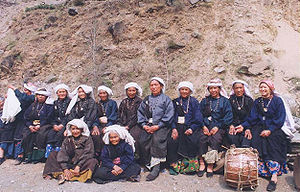
Surviving participants of the first all-woman Chipko action at
Reni village in 1974 on left jen wadas, reassembled thirty years
later.
One of Chipko's most
salient features was the mass participation of female villagers. As
the backbone of Uttarakhand's Agrarian economy, women were most directly
affected by environmental degradation anddeforestation,
and thus related to the issues most easily. How much this participation
impacted or derived from the ideology of Chipko has been fiercely debated in
academic circles.
Despite this, both
female and male activists did play pivotal roles in the movement including
Gaura Devi, Sudesha Devi, Bachni Devi, Chandi
Prasad Bhatt, Sundarlal
Bahuguna, Govind Singh Rawat, Dhoom Singh Negi, Shamsher Singh Bisht and
Ghanasyam Raturi, the Chipko poet, whose songs echo throughout the
Himalayas. Out
of which, Chandi Prasad Bhatt was awarded the Ramon
Magsaysay Award in 1982, and
Sundarlal Bahuguna was awarded the Padma
Vibhushan in 2009.
Legacy
In Tehri district,
Chipko activists would go on to protest limestone mining in the Doon
Valley (Dehra
Dun) in the 1980s, as the movement spread through the Dehradun
district, which had earlier seen deforestation of its forest cover
leading to heavy loss of flora and fauna. Finally quarrying was banned after
years of agitation by Chipko activists, followed by a vast public drive for
afforestation, which turned around the valley, just in time. Also in the
1980s, activists like Bahuguna protested against construction of the Tehri
dam on the Bhagirathi
River, which went on for the next two decades, before founding the Beej
Bachao Andolan, the Save the Seeds movement, that continues to the
present day.
Over time, as a United
Nations Environment Programme report
mentioned, Chipko activists started "working a socio-economic revolution by
winning control of their forest resources from the hands of a distant
bureaucracy which is only concerned with the selling of forestland for
making urban-oriented products.". The
Chipko movement became a benchmark for socio-ecological movements in other
forest areas of Himachal
Pradesh, Rajasthan and Bihar;
in September 1983, Chipko inspired a similar, Appiko
movement in Karnataka state
of India, where tree felling in the Western
Ghats and Vindhyas was
stopped. In Kumaon region,
Chipko took on a more radical tone, combining with the general movement for
a separate Uttarakhand state,
which was eventually achieved in 2000.
In recent years, the
movement not only inspired numerous people to work on practical programmes
of water management, energy conservation, afforestation, and recycling, but
also encouraged scholars to start studying issues of environmental
degradation and methods of conservation in the Himalayas and throughout
India.
On March 26, 2004, Reni,
Laata, and other villages of the Niti Valley celebrated the 30th anniversary
of the Chipko Movement, where all the surviving original participants
united. The celebrations started at Laata, the ancestral home of Gaura Devi,
where Pushpa Devi, wife of late Chipko Leader Govind Singh Rawat, Dhoom
Singh Negi, Chipko leader of Henwalghati, Tehri
Garhwal, and others were celebrated. From here a procession went to
Reni, the neighbouring village, where the actual Chipko action took place on
March 26, 1974. This
marked the beginning of worldwide methods to improve the present situation.
Bibliography
-
Anupam Mishra, Satyendra Tripathi: Chipko
movement: Uttarakhand women's bid to save forest wealth. Pub. by
People's Action, 1978.
- J. Bandopadhyay and Vandana
Shiva: Chipko: India's
Civilisational Response to the Forest Crisis. Indian National Trust
for Art and Cultural Heritage. Pub. by INTACH,
1986.
- J. Bandopadhyay and Vandana
Shiva: "The Chipko Movement Against Limestone Quarrying In Doon
Valley" in: LokayanBulletin,
5 : 3, 1987, pp. 19–25 online
- Thomas Weber, Hugging
the trees: the story of the Chipko movement, Viking, 1988.
- Somen Chakraborty: A
Critique of Social Movements in India: Experiences of Chipko,
Uttarakhand, and Fishworkers' Movement, Published by Indian Social
Institute, 1999. ISBN
81-87218-06-1.
-
Guha, Ramachandra: The
Unquiet woods : ecological change and peasant resistance in the Himalaya,
Berkeley, Calif. [etc.] : University of California Press, Expanded
edition 2000.[citation
needed]
- Rangan, Haripriya : Of
Myths and movements : rewriting Chipko into Himalayan history,
London [etc.]: Verso, 2000. ISBN
1-85984-305-0. Excerpts
See also
References
-
Jump up^ The
women of Chipko Staying
alive: women, ecology, and development, by Vandana
Shiva, Published by Zed Books, 1988. ISBN
0-86232-823-3. Page
67.
-
Jump up^ Bhishnois:
Defenders of the Environment This
Sacred Earth: Religion, Nature, Environment, by Roger S.
Gottlieb. Published by Routledge, 1996. ISBN
0-415-91233-4. Page
159 .
-
Jump up^ Khejarli
- Chipko Arundhati
Roy's The God of Small Things, by Alex Tickell. Published by
Routledge, 2007. ISBN
0-415-35843-4. Page
34.
-
^ Jump
up to:a b c d Box
5: Women defend the trees Global
Environment Outlook, GEO Year Book 2004/5, United
Nations Environment Programme (UNEP).
-
Jump up^ Hijacking
Chipko Political
ecology: a critical introduction, by Paul Robbins. Published by
Wiley-Blackwell, 2004. ISBN
1-4051-0266-7. Page
194.
-
Jump up^ 100
people who shaped India - Chipko Movement India
Today .
-
^ Jump
up to:a b The
Chipko Movement Politics
in the developing world: a concise introduction, by Jeffrey
Haynes. Published by Wiley-Blackwell, 2002. ISBN
0-631-22556-0. Page
229.
-
Jump up^ The
women of Chipko Staying
alive: women, ecology, and development, by Vandana
Shiva, Published by Zed Books, 1988. ISBN
0-86232-823-3. Page
67.
-
Jump up^ Chipko
Movement The
Future of the Environment: The Social Dimensions of Conservation and
Ecological Alternatives, by David C. Pitt. Published by
Routledge, 1988.ISBN
0-415-00455-1. Page
112.
-
Jump up^ Dankelman,
Irene; Davidson, Joan (1988). "[Studying
Chipko Movement – ] Pakistani Women Visit India's Environmental
NGOs". Women and
Environment in the Third World: Alliance for the Future. London: Earthscan.
p. 129. ISBN 1-85383-003-8. OCLC 17547228.
Retrieved September 25, 2013.
-
Jump up^ Chipko Right
Livelihood Award Official
website.
-
^ Jump
up to:a b c Chipko!
- Hill conservationists Tehelka, September
11, 2004.
-
Jump up^ Starting.. Of
myths and movements: rewriting Chipko into Himalayan history, by
Haripriya Rangan. Published by Verso, 2000. ISBN
1-85984-305-0. Page
4-5.
-
^ Jump
up to:a b “Hug
the Trees!” - Chandi Prasad Bhatt, Gaura Devi, and the Chipko
Movement By Mark
Shepard. Gandhi Today:
A Report on Mahatma Gandhi’s Successors, Simple Productions,
Arcata, California, 1987, reprinted by Seven Locks Press,
Washington, D.C., 1987.
-
Jump up^ Ecological
crisis Water Wars:
Privatization, Pollution and Profit, by Vandana
Shiva. Published by Pluto Press, 2002.ISBN
0-7453-1837-1. Page
3.
-
Jump up^ Landslides
and Floods Pauri district
website.
-
^ Jump
up to:a b c Chipko
30th Anniversary The
Nanda Devi Campaign.
-
Jump up^ [1][dead
link]
-
Jump up^ A
Gandhian in Garhwal The
Hindu, Sunday, June 2, 2002.
-
Jump up^ The
Chipko Movement: India’s Call to Save Their Forestswomeninworldhistory.com.
-
Jump up^ Bahuguna,
the sentinel of Himalayas by
Harihar Swarup,The
Tribune, July 8, 2007.
-
^ Jump
up to:a b c d e Chipko
Movement - India International
Institute for Sustainable Development (IISD).
December 2007.
-
Jump up^ India:
the Chipko movement Food
and Agriculture Organization of
the United
Nations (FAO).
-
Jump up^ Mishra,
A., & Tripathi, (1978). Chipko movement:
Uttaranchal women's bid to save forest wealth. New Delhi: People's
Action/Gandhi Book House.
-
Jump up^ Aryal,
M. (1994, January/February). Axing Chipko. Himal, 8-23.
-
Jump up^ Citation
for the 1982 Ramon Magsaysay Award for Community Leadership Ramon
Magsaysay Award website.
-
Jump up^ From
Chipko to Uttaranchal: Haripriya Ranjan Liberation
ecologies: environment, development, social movements, by
Richard Peet, Michael Watts. Published by Routledge, 1996.ISBN
0-415-13362-9. Page
205-206.
-
Jump up^ Chipko
..the first modern Indian environmentalist, and also to being the
greatest... Ramchandra
Guha, The
Telegraph, September 4, 2004.
External links
